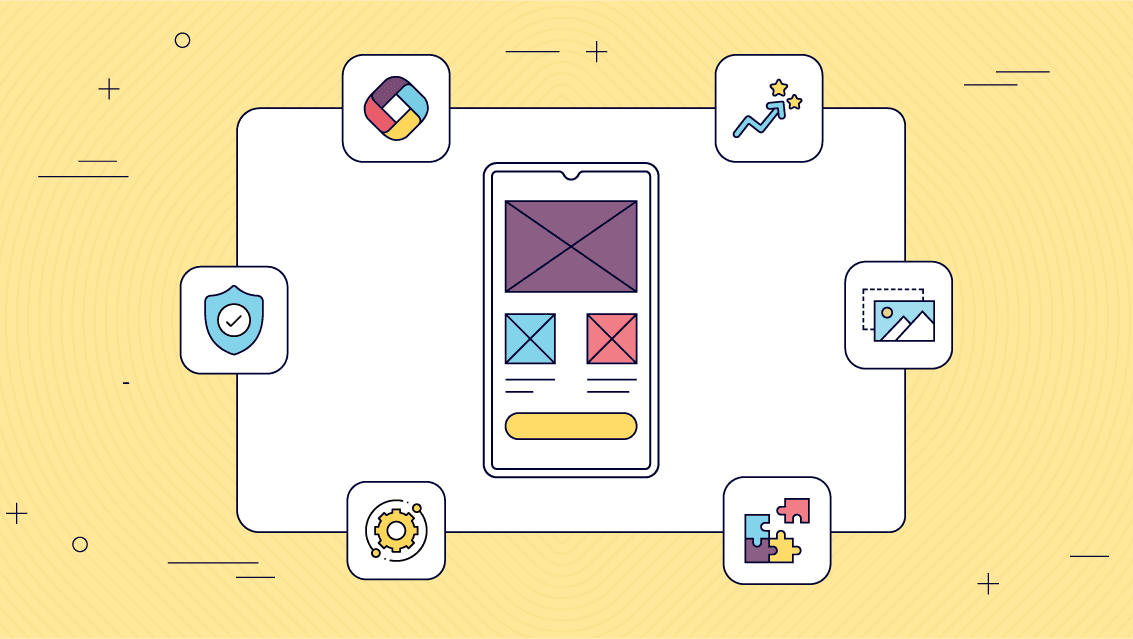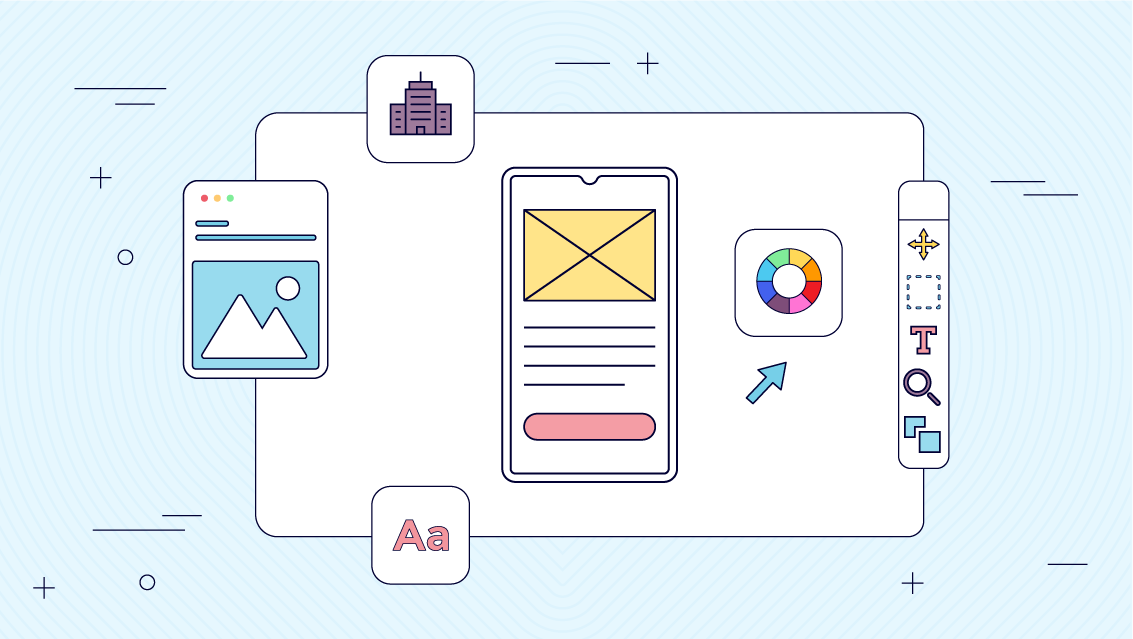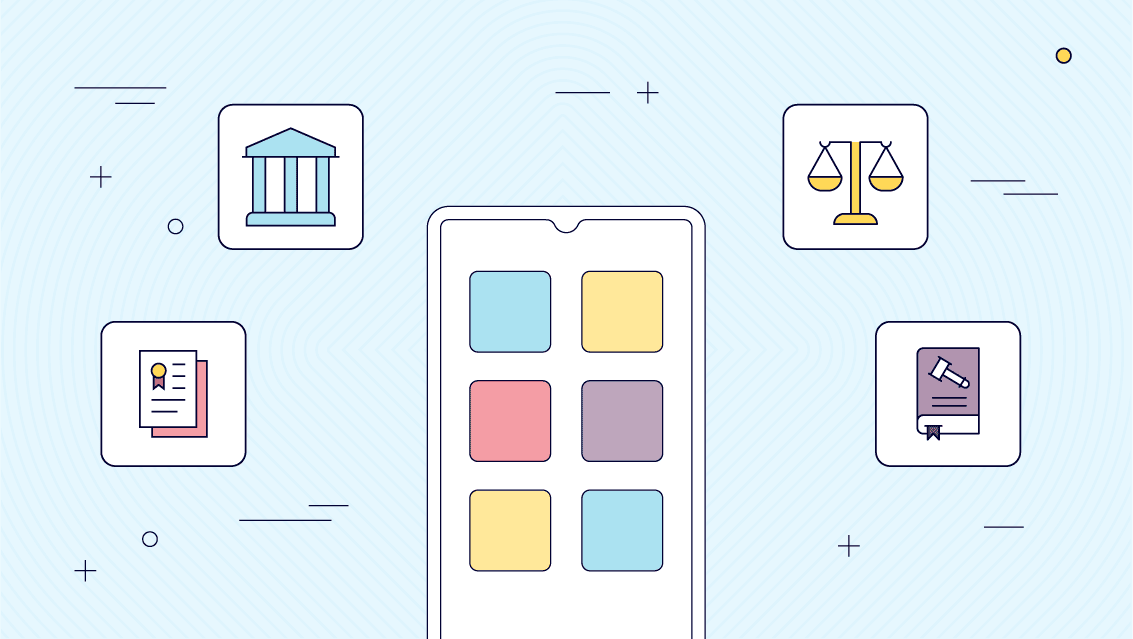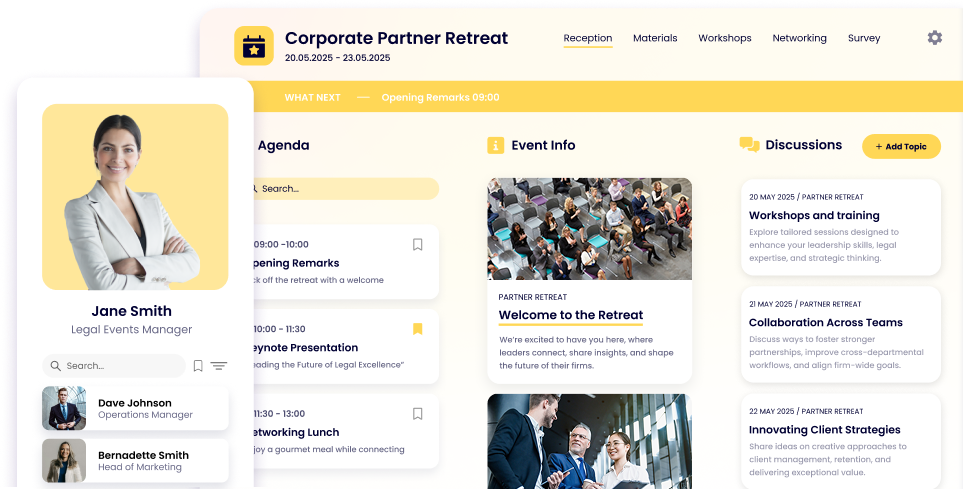16 Top Features of a Successful Mobile App

Niamh Conneely | Marketing Executive

Mobile apps have become an integral part of our daily lives, offering a convenient way to access information, connect with others, and perform various tasks. But in today’s crowded market, how can you create a mobile app that truly stands out from the competition?
As more and more people rely on their smartphones for different activities, having a well-designed mobile app has become a necessity for organizations to stay ahead in the game.
However, designing a mobile app that is both effective and user-friendly is no easy task. In this blog, we’re going to discover the 16 essential features that every successful mobile app must have.
Before we begin, it’s crucial to recognise that there is no one-size-fits-all answer before we get started. You’ll need to perform your own research and examine customer feedback to decide on the ideal features for your app. Although, we are certain that this list will be more than enough to get you started as it does highlight the key features that have thrilled over 1 million users of apps created with Fliplet.
So, get ready to learn the secrets of building an app that engages and excites your users. These are the features that will take your app from good to great and make it a smash hit.
1. User-friendly interface
A user-friendly app is crucial for providing a smooth and intuitive experience for the user, as it makes it easier for them to complete tasks and find the information they need. When an app is not user-friendly, it can lead to frustration, dissatisfaction, negative reviews, and potential loss of users.
52% of users say a bad mobile experience makes them less likely to engage with a company. Therefore, you must prioritize user-friendliness when designing and developing mobile apps to ensure it is successful.
A Fliplet customer described the platform as a “user friendly app building platform with great customer experience.” Take a look at more Fliplet reviews on G2.
2. Push notifications
An app needs to have push notifications as they enable businesses to engage with users and keep them informed about updates, new features, and promotions, even when the app is not open.
Push notifications can improve user retention by reminding users of the app’s value and can be personalized to the user’s interests, enhancing the overall user experience. Research shows push notifications can increase app engagement by 88%.
However, it is important to note, you must be strategic about when and how they send push notifications to ensure they add value rather than annoy users, which could lead to disabling them altogether.
3. Offline functionality
Offline functionality enables users to continue using the app in areas without internet connectivity which can improve the app’s performance and reduce data usage. According to a report by Google, 20% of smartphone users have no access to mobile data, and 45% experience slow mobile network speeds. This highlights the importance of offline functionality for users with limited or unreliable internet access.
Providing offline functionality can also enhance the user experience by allowing them to continue using the app’s features without interruption, increasing user satisfaction and retention.
4. Single Sign-On
Another important feature to consider when developing a mobile app is Single Sign-On (SSO). SSO allows users to sign in to the app using their existing social media or email account, reducing the need to create and remember multiple login credentials.
According to a study, SSO capabilities had a 20% higher conversion rate than those without it. SSO not only enhances the user experience but also reduces the likelihood of users abandoning the app due to login difficulties.
Furthermore, SSO can provide valuable user data to the organization, which can be used to improve targeted marketing and personalization efforts.
5. Security
Internet security is a growing concern, especially for mobile apps that store sensitive information such as personal data, credit/debit card details, and private business assets. 71% of mobile app users uninstall apps that don’t meet their security expectations. Therefore, app security must be a top priority rather than an afterthought. To protect users’ data and maintain trust, you must ensure their app security is watertight and implement the latest encryption methods, strong authentication, and other security measures to keep their app and users’ data safe.
We recommend researching the mobile application development platforms security to see what they comply with, you should ensure they comply with GDPR and are ISO27001 compliant. For more information and guidance on security check out what security Fliplet offers. Or, alternatively you can watch this infosec update hosted by Nick Valbusa, Head of Development at Fliplet which includes an overview of compliance updates and security features.
6. Polls
Polls are also a great way to engage users and foster a sense of community within the app. Polls can be a fun and interactive way to learn more about a particular topic or subject. Users appreciate having the opportunity to share their thoughts and see how their opinions compare to others. 89% of people said that polls and surveys helped them feel more engaged.
The benefit of having polls in an app is that it allows organizations to gather valuable insights from their user. Polls can be used to collect feedback, opinions, and preferences, which can be used to make informed decisions and improve the user experience.
7. Cross platform compatibility
Having cross-platform compatibility means your app can reach a wider audience and ensures that users can access the app from multiple devices and operating systems. Cross-platform compatibility means that the app is designed to work seamlessly on different devices, such as smartphones, tablets, and desktop computers, regardless of the operating system they use. 49% of smartphone users use more than one mobile operating system, highlighting the importance of cross-platform compatibility.
This is important because users may have different preferences when it comes to the device they use, and you need to cater to all of them. By having a cross-platform compatible app, businesses can reach more users and provide a consistent user experience across all devices, increasing user engagement and retention.
With Fliplet, you can create one app that can work on mobile, tablet and the web. See how easy it is:
8. Gamification
Apps need to have gamification because it can enhance user engagement, motivate users to complete tasks, and make the app more enjoyable. 89% of users say they are more likely to use a gamified app.
Gamification involves incorporating game-like elements, such as rewards, badges, or levels, into the app to encourage users to take specific actions or complete tasks. This feature can make the app more interactive and engaging, increasing user satisfaction and retention.
Gamification can also help to create a sense of achievement and progress, making users more motivated to continue using the app. Gamification is a top feature to look out for when selecting or developing a mobile app, as it can make the app more fun and addictive for users, leading to increased engagement and retention.
Fliplet’s Communication solution has a great gamification feature, you can try it for free.
9. Easy to update
Constantly keeping your app up to date is crucial for ensuring its success and providing a positive user experience. Users want to see new features, but it can be challenging for small teams to keep up with the demand. This is where Fliplet comes in. With our platform, you don’t need to worry about constantly adding new features to your app. We do it for you.
Having an app that is easy to update is crucial for quickly introducing new features, fixing bugs, and improving the app’s overall performance. This not only enhances the user experience but also helps organizations stay ahead of the competition by providing an app that meets the ever-changing user needs and expectations. In fact, 53% of users will uninstall an app if it hasn’t been updated in over six months.
10. Chat
Chat has become an increasingly popular feature in mobile apps because it offers a convenient and efficient way for users to communicate with employees and clients. Live chat is expected to continue to grow by as much as 87% in the next 12-18 months.
This feature allows users to send real-time messages, photos, and videos, making it a quick and engaging way to communicate. For organizations, integrating chat into their app can help them offer instant customer support and resolve issues quickly, improving customer satisfaction and retention.
Additionally, chat can also enhance collaboration and communication within teams by allowing members to share information and ideas in real-time. Chat is a key feature to look out for when selecting or developing a mobile app, as it can improve communication, collaboration, and customer support, providing a more engaging and interactive user experience.
If you’re looking to improve your organization’s communication, collaboration, and customer support then discover more on Fliplet’s Communication solution.
11. Personalization
Personalization has become an increasingly important feature in today’s mobile applications. According to a report by Accenture, 72% of users only engage with personalized messaging. As such, the ability for apps to tailor their content and experiences to individual users has become a crucial factor in attracting and retaining users.
Personalized content and recommendations can improve conversion rates by up to 202%. Decision trees provide users with personalized recommendations based on their specific needs and circumstances, which can improve user engagement, satisfaction, and ultimately, conversion rates.
It can be particularly useful for apps that offer complex services or products, such as healthcare or financial services, where users may require guidance in making informed decisions.
For more on apps in healthcare, read our blog.
12. Supports multiple languages
Supporting multiple languages in a mobile app is crucial for organizations that want to create a global presence and attract a diverse user base. By providing language support, the app can reach a broader audience and cater to users who prefer to use their native language. Localization can increase app downloads by up to 128%. This feature can enhance user experience, increase user engagement, and lead to higher user satisfaction and retention rates.
Organizations that offer multiple language support can also help establish a global brand identity and increase brand recognition. Additionally, this feature can help businesses gain a competitive edge by setting the app apart from others and showing a commitment to inclusivity and diversity.
For example, Fliplet’s Multilingual solution offers the option to have a single app available in multiple languages. The solution is configured to use English and Mandarin to provide an example of how the translations work. Want more information? Watch this demo or head over to the Multilingual solution help page.
13. Offers user generated content
User-generated content feature for organizations to look out for when developing a mobile app because it can increase user engagement, promote user-generated marketing, and build a community around the app. 60% of people say user-generated content is the most authentic form of content.
By allowing users to create and share their content, user-generated content can make the app more interactive and engaging, leading to increased user satisfaction and retention rates.
For organizations, user-generated content can help promote user-generated marketing, where satisfied users promote the app to others, leading to a higher user acquisition rate. Additionally, user-generated content can help build a community around the app, where users can share their experiences, connect with like-minded individuals, and offer support and feedback to each other.
With Fliplet users can share content within your app, for example Fliplet’s Innovation Management solution (also known as idea generation solution) can gather brilliant ideas from people that know your organization the best, your employees. The benefits of having an idea management app with Fliplet are:
- Enable large enterprise teams to collaborate more effectively
- Make communication easier for customers and employees
- Empower communities to come together
- Enable Institutional inclusion
You can start building your Innovation Management app today for free.
Read this Saul Ewing case study to see how they introduced an innovation challenge app called “SAULutions” and collected hundreds of ideas from staff and partners. Discover how they empower their colleagues to use their voices, drive innovation and boost engagement.
14. User feedback
User feedback provides valuable insights into user preferences, needs, and pain points. By allowing users to give feedback, organizations can gather information on what works and what needs improvement in the app, leading to increased user satisfaction and retention rates.
For example, user feedback can help identify bugs, usability issues, or features that users want to see in the app. This information can then be used to improve the app’s performance and add new features that meet user needs. Additionally, offering user feedback can also help build a relationship of trust and transparency between the organization and its users, where users feel valued and listened to.
User feedback can be achieved through a variety of ways such as:
- Polls
- Surveys
- Questions
Receiving feedback quickly and easily through the app means that your organization can act accordingly upon it. 88% of people say they are more likely to stay loyal to a company that implements their feedback.
15. Search
Apps need a search feature because it provides users with a quick and easy way to find the information or content they’re looking for within the app. Users spend 80% of their time on mobile apps using search or navigation functions.
A search feature helps users navigate through the app efficiently, without the need to manually browse through different pages or menus. Additionally, a search feature can benefit users in the following ways:
- Time-saving: Users can quickly find what they’re looking for, without the need to scroll through various pages or menus.
- Convenience: Users can easily search for specific items, products, or services without having to navigate through multiple screens.
- Improved user experience: By making it easier for users to find what they’re looking for, a search feature can improve the overall user experience and encourage them to spend more time within the app.
16. Filter and bookmark
It may sound simple but not all mobile apps offer these basic features. A filter and bookmark option are a must-have feature, regardless of how simple or complex the app may be. Apps with a filter option saw up to 2.4 times higher retention rate compared to apps without these features.
It is essential because not all users have the same level of technical skills, and this makes it easy for them to find what they are looking for quickly. Without the option to filter or bookmark, users may get frustrated and lose interest in the app, leading to a poor user experience and lower user retention rates.
Key statistics
In case you missed it, here are the key statistics for the top 16 features you need to have for a successful mobile app:
1. 52% of users say a bad mobile experience makes them less likely to engage with a company.
2. Research shows push notifications can increase app engagement by 88%.
3. According to a report by Google, 20% of smartphone users have no access to mobile data, and 45% experience slow mobile network speeds. This highlights the importance of offline functionality for users with limited or unreliable internet access.
4. SSO capabilities had a 20% higher conversion rate than those without it.
5. 71% of mobile app users uninstall apps that don’t meet their security expectations.
6. 89% of people said that polls and surveys helped them feel more engaged.
7. 49% of smartphone users use more than one mobile operating system, highlighting the importance of cross-platform compatibility.
8. 89% of users say they are more likely to use a gamified app.
9. 53% of users will uninstall an app if it hasn’t been updated in over six months.
10. Live chat is expected to continue to grow by as much as 87% in the next 12-18 months.
11. Personalized content and recommendations can improve conversion rates by up to 202%.
12. Localization can increase app downloads by up to 128%.
13. 60% of people say user-generated content is the most authentic form of content.
14. 88% of people say they are more likely to stay loyal to a company that implements their feedback.
15. Users spend 80% of their time on mobile apps using search or navigation functions.
16. Apps with a filter option saw up to 2.4 times higher retention rate compared to apps without these features.
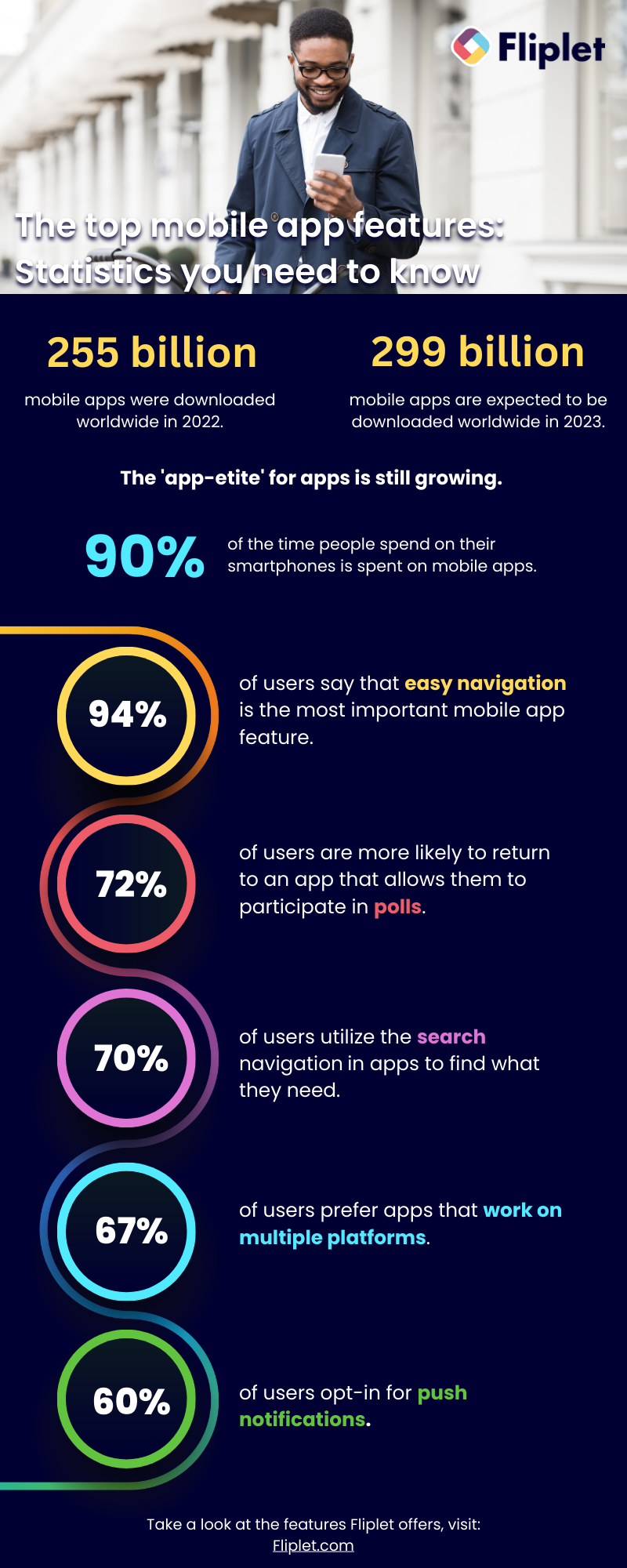
How Fliplet can help you create a successful mobile app
Developing a mobile app with all the necessary features listed in this blog can be a daunting and expensive task for any organization. However, with Fliplet, organizations can access all of these features and more without breaking the bank.
Fliplet allows organizations to develop and customize their mobile app with ease, providing a user-friendly interface, push notifications, offline functionality, security features, analytics, and much more.
Fliplet has a large selection of pre-built solutions that you can fully customize to suit your needs. Each solution has a variety of different features to ensure you create the most successful app for you. The solutions that Fliplet offers include:
- Learning (Want to start building your learning app? Read this blog to see how you can build one on a budget)
- Directory (Check out 15 HR apps that will change the way you work)
- Marketing
- Innovation/idea management
- Approval workflow
- Portal app
- Sales Enablement
- Communications (Take a look at this blog where we compared the top 10 community apps to engage and monetize your community or you can check out the 15 best team communication apps of 2023)
- Data capture
- Emergency Management (Take a look at the 5 steps to take to prepare for a dawn raid)
- Events (To compare our Event solution to other solutions read the 25 best mobile event apps you need in 2023)
- Food ordering
- Multilingual
- Remote and office management
- Task management
- Reporting App
- Blank solution to build from scratch
Fliplet offers a huge range of features and over 300 pre-built screens which helps you build your mobile application in hours, not weeks.
Fliplet price
Fliplet Reviews
- Capterra – 4.8 / 5
- G2 – 4.6 / 5
Discover how Fliplet has helped other organizations develop a successful mobile app with all the necessary features by reading some case studies.
Mills & Reeve: An award winning mobile app
Read Fliplet’s case study on Mills & Reeve’s award-winning “What the Tech?!” app, made to support technological discovery. The app supports technology discovery across the firm
Challenge: The Knowledge Management team was looking for a solution that would improve Partner awareness of the legal technology solutions and tools they had available to help them and their clients. The team wanted to make this information available at the touch of a button and to prevent any blockers for their lawyer group in obtaining the information needed.
Solution: The firm needed to find a way to communicate their legal technology offering to staff in a way that was:
- More effective in spreading knowledge.
- Easier to access and use.
- Less dependent on the resources of the Innovation team.
So, creating an app with Fliplet was an obvious choice.
Results: The team developed an award-winning app, recognized with The Legal Innovation 2020 award for Knowledge Management Innovation. The app was described as a highly innovative, neat, simple and very effective solution to make sure Partners are keeping up-to-date information to help them make informed decisions at the touch of a button.
For more on making an app for iphone, read our blog.
What makes an app successful?
Mobile apps have become an integral part of people’s lives, and with over 2.5 million apps available, it can be challenging to create an app that stands out. So, what makes an app successful?
A successful mobile app should provide a seamless user experience while helping businesses achieve their goals. It should be easy to use, add value to the user, and provide data that helps improve customer experiences.
Building a mobile app as a complement to your organization can bring many benefits, including collecting and managing customer insights, streamlining business processes, automating administrative tasks, improving marketing content, and boosting sales and revenue.
When done right, a mobile app can take your business to the next level and help you stay ahead of the competition. If you are a Shopify merchant, mobile app builders are undoubtedly a prominent concern to perfect the customer journey. So, it’s essential to invest in an app that provides an excellent user experience while meeting your organization’s needs.
Choosing the right features for your app
Choosing an app feature can be a challenging task, but here are some steps to help you make an informed decision:
1. Identify your app’s purpose: Start by understanding your app’s purpose and what problems it is trying to solve. Identify the core features that are essential for achieving your app’s primary objective.
2. Research your target audience: Understanding your target audience’s needs and preferences is critical for choosing the right app features. Conduct user research, gather feedback, and identify the features that will provide the most value to your users.
3. Prioritize features: Once you have identified the essential features, prioritize them based on their importance and the value they provide to the users. Start with the most critical features and add additional features incrementally.
4. Consider the competition: Analyze the competition and identify the features they offer. Consider adding unique features that differentiate your app from the competition while providing value to the users.
5. Evaluate feasibility: Evaluate the feasibility of each feature in terms of development time, cost, and resources required. Consider factors like technical complexity, scalability, and integration with other systems.
6. Test and iterate: Test your app features with users, gather feedback, and iterate based on the results. Continue to monitor user feedback and data to ensure that your app is meeting user needs and expectations.
By following these steps, you can choose the right app features that provide value to your users and help your app stand out from the competition.
In summary, mobile apps have become a game-changer for organizations to reach and engage their customers. But to create a successful app, you need to have the right features that provide value to your users and meet their needs. The top 16 features for a successful app, including a user-friendly interface, push notifications, offline functionality, security and more, are crucial for delivering an exceptional user experience and collecting valuable data.
Fortunately, with Fliplet, you can access all these essential features and more without worrying about the development costs. Fliplet offers a free trial, giving you the chance to explore all the features and experience firsthand how they can take your app to the next level.
FAQs
What are the most important features of an app?
The most important features of an app can vary depending on the type of app and the target audience. However, some key features that are essential for almost all types of apps include:
- User-friendly interface: A well-designed and intuitive interface is crucial for providing a seamless user experience and keeping users engaged with the app.
- Push notifications: Push notifications can help businesses stay in touch with their users and keep them informed about important updates, new features, or special offers.
- Offline functionality: Offline functionality is essential for apps that require constant access to data or that are used in areas with limited or no internet connectivity.
- Security: Security features are critical for protecting users’ personal and sensitive information from hackers or data breaches.
- Analytics: Analytics tools can help businesses track user behavior, identify trends, and improve the app’s performance and user experience.
- Cross-platform compatibility: Cross-platform compatibility is essential for ensuring that the app works seamlessly on different devices and operating systems.
- Gamification: Gamification features can help increase user engagement and motivation by adding game-like elements to the app.
- Integration: Integration with other systems or platforms can help businesses streamline their operations and provide a more seamless experience for users.
- Easy to update: The ability to update the app easily is crucial for fixing bugs, adding new features, and improving the user experience.
- Chat: Chat features can provide users with quick and easy access to customer support or other services.
- Customization: Customization features can help businesses tailor the app to the user’s preferences and provide a more personalized experience.
- Supports multiple languages: Supporting multiple languages is essential for reaching a global audience and making the app accessible to users who don’t speak the app’s primary language.
- Offers user-generated content: User-generated content can help increase user engagement, build a sense of community, and provide valuable insights into user behavior.
- User feedback: User feedback features can help businesses identify areas for improvement, address user concerns, and improve the overall user experience.
- Search, filter, and bookmark: Search, filter, and bookmark features can help users quickly find the information they need and save their favorite content for future use.
How many features should an app have?
There is no set number of features that an app should have. The number of features an app should have depends on the app’s purpose, target audience, and the problem it is trying to solve. It’s essential to strike a balance between having enough features to provide a seamless user experience while avoiding cluttering the app with unnecessary features that could overwhelm or confuse users.
It’s crucial to prioritize the essential features and ensure they work seamlessly before adding any additional features. Start with a minimum viable product (MVP) and add features incrementally based on user feedback and data. As a general rule, it’s better to have fewer features that work well than to have a lot of features that don’t work as intended.
In summary, the number of features an app should have depends on the app’s purpose and target audience, and it’s essential to prioritize the essential features and avoid unnecessary clutter. Starting with an MVP and incrementally adding features based on user feedback can help ensure a successful and user-friendly app.
What are 5 characteristics of a good app?
- User-friendly interface: A well-designed and intuitive interface is crucial for providing a seamless user experience and keeping users engaged with the app.
- Performance and speed: A good app should load quickly, be responsive, and provide a smooth and seamless experience for the users.
- Security: Security features are critical for protecting users’ personal and sensitive information from hackers or data breaches.
- Valuable and relevant content: A good app should provide valuable and relevant content that meets the user’s needs and helps them achieve their goals.
- Regular updates: Regular updates are essential for fixing bugs, adding new features, and improving the user experience. Users expect the app to be updated regularly to stay relevant and meet their evolving needs.
These characteristics are essential for creating a successful app that provides a seamless user experience while helping businesses achieve their goals. By prioritizing these characteristics, businesses can create an app that stands out from the competition and meets the needs and expectations of their target audience.
Can an app have too many features?
Yes, an app can have too many features. Having too many features can make the app overwhelming and confusing for users. Users may find it difficult to navigate through the app, find what they are looking for, or understand how to use the app’s features. Additionally, having too many features can slow down the app’s performance, leading to longer load times and poor user experience.
It’s important to strike a balance between having enough features to provide a seamless user experience while avoiding cluttering the app with unnecessary features. Prioritizing the essential features and ensuring they work seamlessly before adding any additional features can help avoid overwhelming the app with unnecessary clutter. It’s also crucial to gather user feedback and data to identify the features that provide the most value to the users and avoid adding features that are rarely used or not useful to the target audience.
In summary, an app can have too many features, and it’s essential to prioritize the essential features, avoid unnecessary clutter, and gather user feedback to identify the features that provide the most value to the users.

